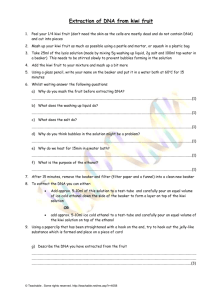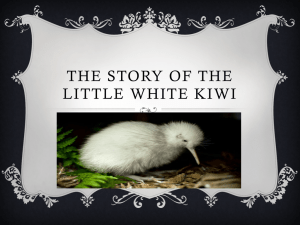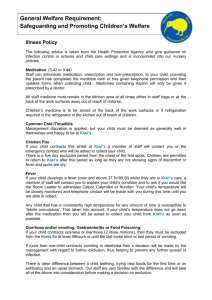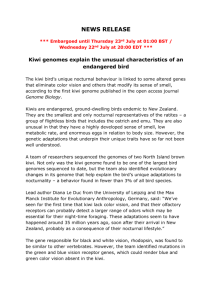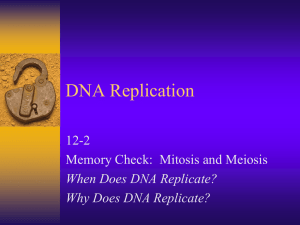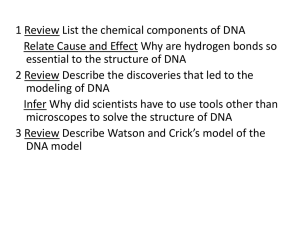Activiteiten in teken van scholenbanden
advertisement
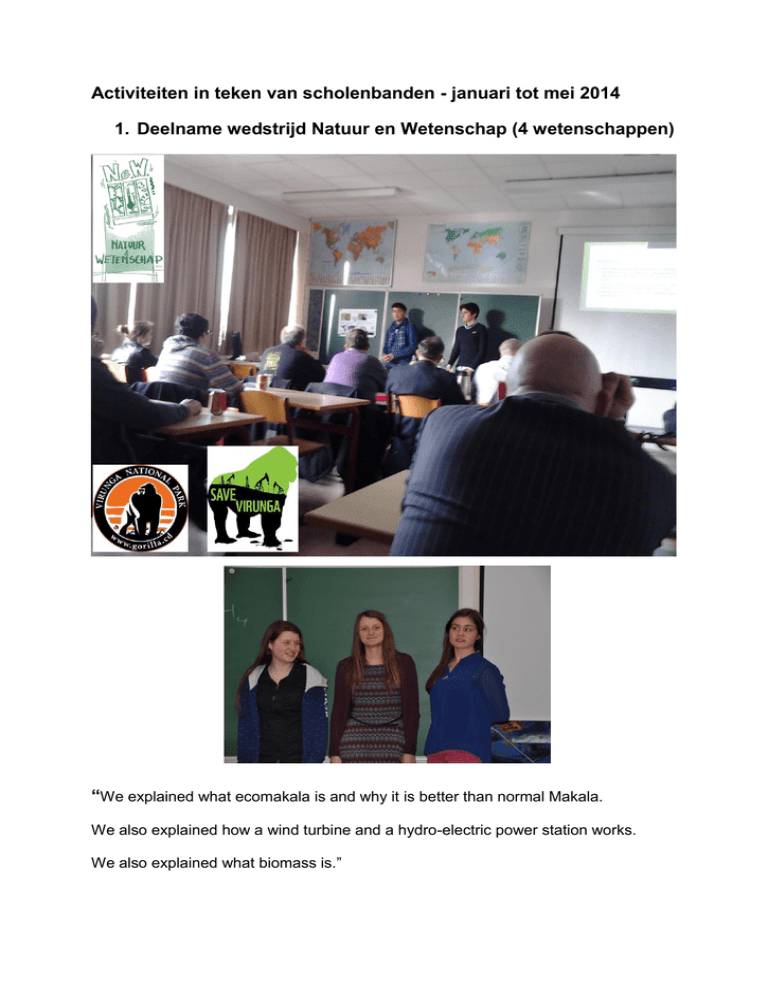
Activiteiten in teken van scholenbanden - januari tot mei 2014 1. Deelname wedstrijd Natuur en Wetenschap (4 wetenschappen) “We explained what ecomakala is and why it is better than normal Makala. We also explained how a wind turbine and a hydro-electric power station works. We also explained what biomass is.” 2. Isolatie van DNA uit een kiwi of een banaan en het maken van een Engels verslag (6 de jaar NW) THE ISOLATION OF DNA FROM A KIWI An experiment by: Imane Achtatou Naomi Van Wesemael Vincent De Keer Teoman Kiliç Conducted at K.A.Mariakerke on the 12th of march 2014 The problem statement: Is it possible to isolate DNA from fruit? In this experiment a kiwi was used. The experiment was not that difficult, although some problems occurred with getting material which had the correct measurements. The procedure was sometimes not that clearly indicated in the steps. None of these were severe though. The hypothesis: It has been assumed that it is possible to isolate DNA from fruit. The description of the experiment: The DNA is separated as follows: the fibre brakes and so does the cells, afterwards the membrane around the cell and the nucleus are broken as well due to the soap. This way, the DNA can be released from the nucleus. The salt also helps to isolate the DNA from the proteins. The cell fragments are removed by filtration, leaving the DNA to be condensed and made visible with alcohol. 1. Peel the skin of the kiwi and cut it into pieces. [1] 1. Measure 250ml distilled water. 2. Pour into the bowl with the kiwi and mix it up till there is a smooth brew. [2] 3. Take a plastic cup, put 1 little spoon of shampoo and 2 of salt in it and mix it with 20ml distilled water. 4. Add 4 little spoons of the kiwi brew to the cup and stir it for 6.5 minutes. [3] 5. After stirring, take a measuring cylinder on which there is put a funnel with a coffee filter in it and pour the kiwi brew in it. [4] 6. Let it seep through until having attained 5ml. 7. Pour this filtrate in a test tube and add 5ml of cold alcohol. 8. Wait until the DNA has separated itself on the surface of the liquid in the glass. Remarks about the procedure: Do not use too much shampoo on the spoon, since this causes a less fluid mixture which makes it harder to flow through the coffee filter. Make sure you do not stir too hard since this will create foam, that must be avoided at any step of the process. The results: The DNA in the test tube did not accumulate as expected on the surface. The DNA was visible though in an opaque area around the middle of the test tube. [5] When the result of a kiwi and a banana are compared, it seems that bananas give a more visible result. [6] The conclusion: The hypotheses was accepted, since the expected result was achieved, although it was lesser than expected. This was because the result was not clearly visible. The sources: VANLOMMEL, G. en CASIER, P., natuurwetenschappen 6de jaar, nietgepubliceerde cursus, Gent, K.A. Mariakerke, 2013-2014; Enclosure: images 1. Salt, pieces of peeled kiwi and shampoo 2. A smooth brew of a kiwi and 250ml distilled water 3. Stirring the mix of kiwi, shampoo, salt and distilled water 4. The setup for attaining the filtrate 5. 6. The result of our test, with the light opaque DNA The result of the same test, but with a banana instead of a kiwi 3. Presentatie van de onderzoekscompetentie ‘De Rwandese genocide’ (6HW)
